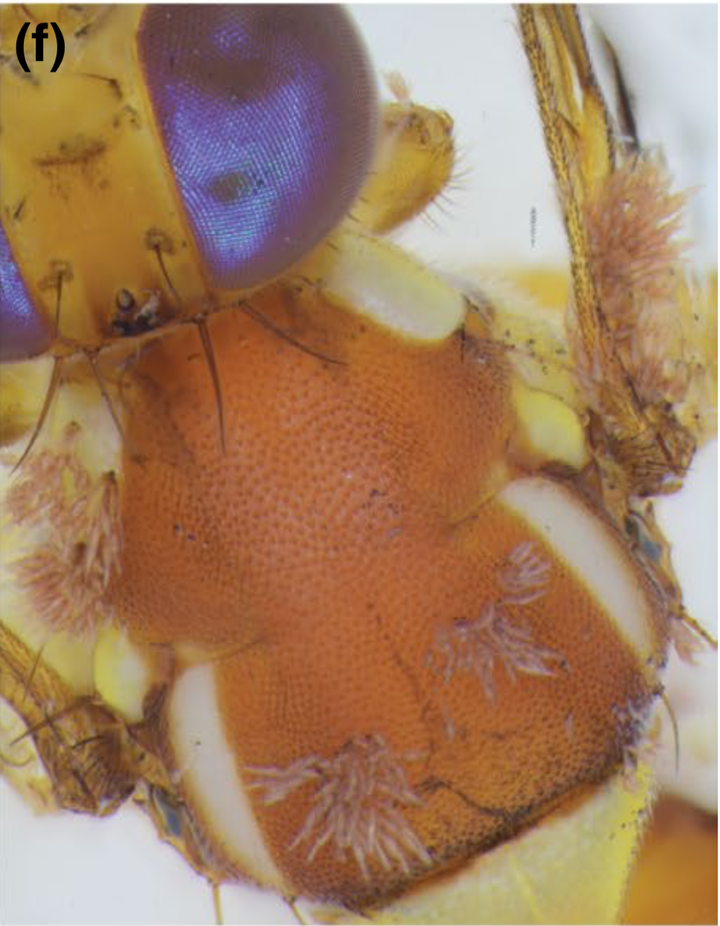 Image credit: S Sievert
Image credit: S SievertAbstract
Understanding the factors that determine the realized and potential distribution of a species requires knowledge of abiotic, physiological, limitations as well as ecological interactions. Fungi of the order Laboulbeniales specialize on arthropods and are typically thought to be highly specialized on a single species or closely related group of species. Because infections are almost exclusively transmitted through direct contact between the hosts, the host ecology, to a large extent, determines the dis- tribution and occurrence of the fungus. We examined ~20,000 fruit flies (Diptera: Dacinae) collected in Malaysia, Sulawesi, Australia, and the Solomon Islands between 2017 and 2019 for fungal infections and found 197 infected flies across eight dif- ferent Bactrocera species. Morphology and 1,363 bps of small subunit (18S) DNA sequences both support that the infections are from a single polyphagous fungal species Stigmatomyces dacinus—a known ectoparasite of these fruit flies. This leads to the question: why is S. dacinus rare, when its hosts are widespread and abundant? In addition, the hosts are all Bactrocera, a genus with ~480 species, but 37 Bactrocera species found sympatric with the hosts were never infected. Host-selection does not appear to be phylogenetically correlated. These results suggest a hidden complexity in how different, but closely related, host species vary in their susceptibility, which somehow limits the abundance and dispersal capability of the fungus.